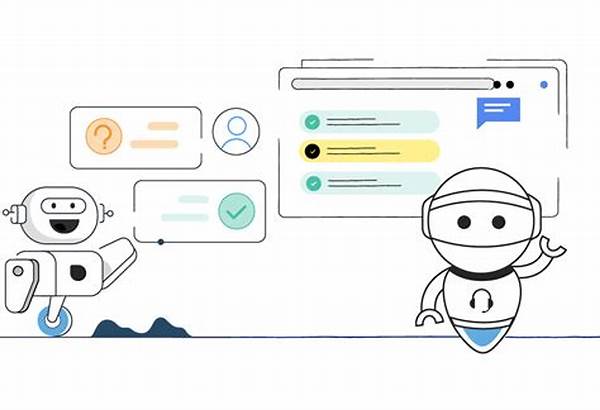Hey there, tech enthusiasts! Today, we’re diving into the fascinating world of chatbots and the magical ingredient that makes them tick — supervised learning! If you’ve ever wondered how chatbots understand us (well, mostly), this post is for you. Sit back, sip on your coffee, and let’s get into the nitty-gritty of how supervised learning elevates the chatbot game!
The Magic Behind the Bots
So, what exactly is the magic behind these intelligent chatbots? Supervised learning in chatbots is the answer! It’s one of the most common types of machine learning and involves training the chatbot using a labeled dataset. This means each input is paired with the correct output, kinda like a teacher grading papers with an answer key. The chatbot learns by comparing its own responses to the correct ones, learning what works and what doesn’t. Over time, with loads of data, it gets better at predicting the right responses, like a student who finally figured out that math problem.
Now, you might wonder why we desperately need supervised learning in chatbots. Imagine each potential query from users as a complex puzzle. Without the guidance from supervised learning, our chatbots would be shooting in the dark! They’d struggle to understand context or the nuances of language, resulting in frustrating user experiences. But thanks to this clever technique, chatbots can engage in meaningful conversations, offering solutions and information with a human-like touch.
Getting Into the Nitty-Gritty
Let’s get a tad technical, but don’t worry—it’s going to be friendly! Supervised learning in chatbots involves training algorithms using vast datasets containing inputs paired with the correct outputs. The dataset serves as a guide map for the chatbot. Over time, as it processes more data, the bot learns to predict what users want. It’s much like teaching your dog tricks, only here you aren’t armed with treats!
The system adjusts itself based on the errors it makes along the way, improving its accuracy over time. This method powers many of the intelligent bots we interact with today. Without supervised learning in chatbots, you would still be yelling at your virtual assistant for ordering a pizza when you asked for the weather report!
Why It Matters
Curious why all this is significant? Well, supervised learning in chatbots is revolutionary in making digital interactions feel more human-like. It’s not just about chatbots understanding you; it’s about chatbots learning to converse naturally, predict user needs, and adapt to changes. This is particularly important in customer service, where users often seek immediate, accurate responses.
For developers, utilizing supervised learning means creating bots that are not just functional but also intuitive. This intuitive nature stems from the bot’s ongoing learning process, where it’s consistently fine-tuning its capabilities based on user interactions. This results in better customer satisfaction and, ultimately, loyalty. Remember, a happy bot means happy users!
How Supervised Learning Actually Works
So, how does the process really work? Picture supervised learning in chatbots as the teacher-student dynamic. The bot receives input (questions) and provides an output (answers). If it gets an answer wrong, it adjusts its algorithm to improve. It’s as if you’re providing feedback, helping the bot ace its exams next time around. Think thousands of revisions and corrections, resulting in a bot that’s quite the conversationalist!
Here’s another cool aspect: with supervised learning in chatbots, feedback doesn’t just come from pre-labeled data. User interactions play a part too. Every time a user corrects or rates a response, the bot learns, mimicking real-life learning curves.
Building Better Chatbots
Think of building a chatbot like assembling a complex Lego set without the instruction manual. Enter supervised learning—it’s like finding that manual hidden under the couch! Supervised learning in chatbots is not just about training them but enabling them to adapt. The method involves teaching chatbots using numerous examples and counterexamples, refining their choices along the way.
The end goal? A chatbot that’s smart, engaging, and capable of handling diverse conversations with finesse. The ability to adapt and learn continuously ensures that chatbots remain relevant and capable in rapidly changing tech scenarios, making supervised learning an invaluable tool in their development.
The Future with Supervised Learning
Here’s the exciting bit—the future of chatbots using supervised learning is promising. As technology evolves, so does the capability of chatbots. With advancements in supervised learning, these digital companions could become even more insightful, interpreting emotions and providing support beyond standard responses. They could know if you’re having a bad day or offer a virtual shoulder!
Moreover, the personalization factor is amped up—chatbots could begin to predict your preferences, like how you prefer your coffee without you saying a word. Supervised learning in chatbots opens the door to endless possibilities, each more fascinating than the last.
Wrapping It Up
So there you have it—the magic wand that is supervised learning in chatbots! By providing chatbots with a well-paved path of questions and answers, we empower them to become smarter, more reliable, and oh-so better at small talk. Supervised learning provides the structure that these bots need to thrive, turning basic AI into sophisticated conversationalists.
In a world that’s becoming increasingly digital, having smart, intuitive chatbots can be a game-changer for businesses and consumers alike. They make our lives easier, drive better customer service, and are just plain fun to interact with! So next time you find yourself chatting with one, tip your hat to the invisible world of supervised learning at work. Cheers to a future where our chatbot friends are indistinguishable from human aides!

